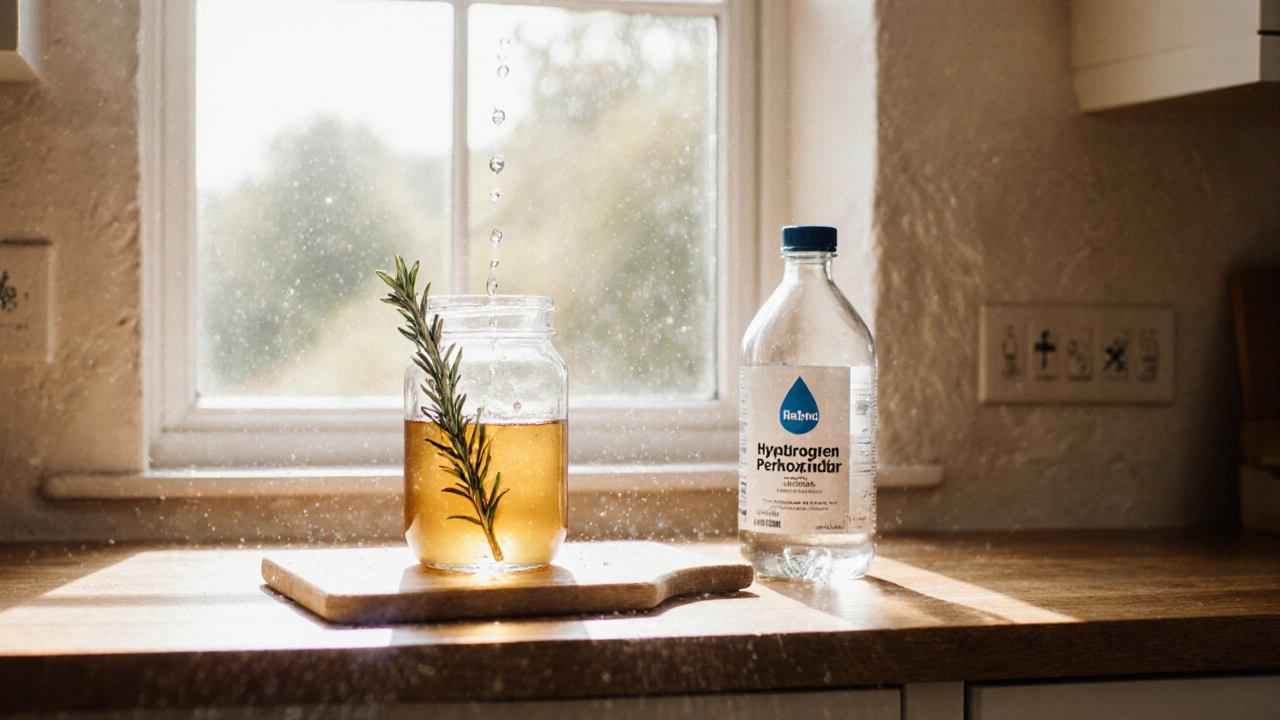Vinegar vs Hydrogen Peroxide – Which One Is Best for Your Cleaning Jobs?
If you’re scrolling through DIY cleaning tips, you’ll see vinegar and hydrogen peroxide pop up a lot. Both are cheap, easy to find, and claim to kill grime. But they’re not interchangeable. Knowing when to grab a bottle of white vinegar and when to reach for peroxide can save you time, money, and maybe a few missed spots.
How They Work
Vinegar is an acid (about 5% acetic acid). It breaks down mineral deposits, loosens soap scum, and can neutralise alkaline odors. Its smell fades after it dries, leaving a clean scent. Hydrogen peroxide is a mild bleach (usually 3% solution). It releases oxygen when it contacts organic material, which lifts stains and kills many bacteria and viruses.
Because of those chemistry differences, they excel at different tasks. Vinegar won’t disinfect the way peroxide does, and peroxide can discolor some fabrics that vinegar would leave untouched. Mixing them together actually cancels out their power, so keep them separate.
Best Uses in the Home
Stubborn grease and mineral buildup: Spray white vinegar on stovetop, oven door glass, or bathroom tiles. Let it sit 5‑10 minutes, then wipe with a damp cloth. The acid softens the grime, making it easy to scrub away.
Odor‑heavy areas: Hydrogen peroxide works well on urine‑stained mattresses or carpet patches. Apply a small amount, let it bubble for a few minutes, then blot dry. The bubbling action breaks down the odor molecules.
Glass and mirrors: A 1:1 mix of vinegar and water gives a streak‑free shine. Spray, wipe with a lint‑free cloth, and enjoy crystal‑clear results without harsh chemicals.
Disinfecting high‑touch surfaces: Use hydrogen peroxide on kitchen counters, bathroom sinks, and doorknobs. It kills most germs within a minute, and it evaporates without leaving residue.
Cleaning upholstery: For fabric sofas, sprinkle baking soda first to absorb odors, then mist a light spray of hydrogen peroxide. Test a hidden spot first to avoid bleaching.
Both cleaners are safe for most surfaces, but always check the manufacturer’s label. Acid‑sensitive stone (like marble) should never see vinegar, and peroxide can fade delicate dyes on silk or wool.
In a pinch, you can keep a simple cleaning kit: a spray bottle of diluted vinegar, a bottle of 3% hydrogen peroxide, and a few micro‑fiber cloths. Rotate between them based on the job, and you’ll cover most household messes without buying expensive products.
So, which one should you reach for today? If the problem is grease, scale, or a cloudy shine, grab the vinegar. If it’s a stain, odor, or a surface that needs disinfecting, go with peroxide. Use each where it shines, and your home will stay fresh without the chemical overload.

Vinegar vs Hydrogen Peroxide: Which Disinfects Better?
Compare vinegar and hydrogen peroxide as disinfectants, covering their chemistry, effectiveness against germs, safety, usage tips, and best‑fit scenarios for home cleaning.
Read More